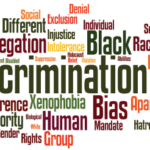This family knows racism and can readily see it in both its blatant and subtle forms. It is felt in some way every day. Racism, we know, is sometimes unconscious. It is “a belief in the inferiority of a person caused by prejudice against their ethnicity or phenotypic characteristics.”6 Racial discrimination is the “behavioral component of racism that manifests as differential treatment across various contexts such as interpersonal situations, systems and structures, and institutions.”6
Brooke A. Cunningham, MD, PhD, a general internist, sociologist and assistant professor in the Department of Family Medicine and Community Health, University of Minnesota, Minneapolis, writes, “Black and Brown mothers have concerns that white mothers do not. We stand watch over our children as this world tries to deny their beauty, thwart their genius, dim their light and too quickly take their innocence. We know the day will soon come when we will have to dry their tears and remind them that they are everything. We hold them tight, because we know there will be other days when we will not be there to comfort them.”7
Sarah’s mother continues, “We were just having this conversation a few months before all of this happened with Sarah. Saying to each other, you wouldn’t believe how many Black people are not taken seriously while at the [doctors’ office]. Another daughter was just about to have a baby and, knowing they don’t take Black women seriously, she had fears about her risk of dying in childbirth. This is truth-telling.”8
Repetitive experiences of perceived or blatant discrimination in daily life—and especially during healthcare encounters—can condition one to distrust the healthcare system and the people within it. Presenting for care can, paradoxically, pose a threat to life and dignity. The healthcare setting is, thus, inherently provocative for Sarah’s family and others who are keenly aware of racism and racial health disparities in the U.S.
Disparities
Disparity is a term used to address avoidable differences.9 Unequal health outcomes are not inherently unjust because they can arise from biology or chance.10 Disparities are “linked to social, economic, or environmental disadvantages and are fueled by bias or discrimination at the individual, institutional, and health care system levels.”11 They are “differences between groups who have systematically experienced greater obstacles to health based upon gender, age, race, ethnicity, religion, mental or physical ability, and geographic location compared to the majority population.”11
Notable racial, ethnic, socioeconomic and geographic disparities exist in care delivery, comorbidities and adverse outcomes among individuals with rheumatic diseases.12-14



